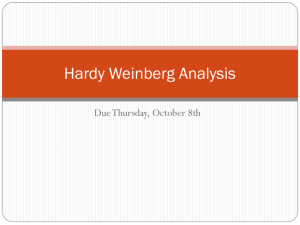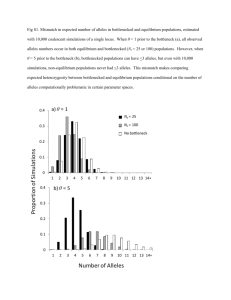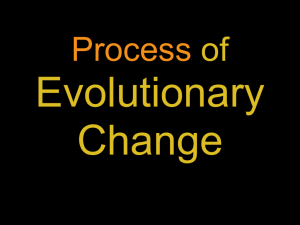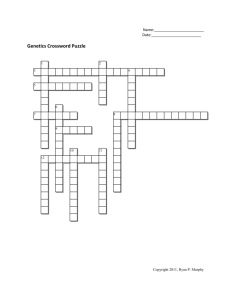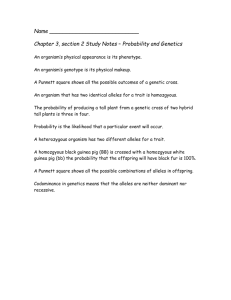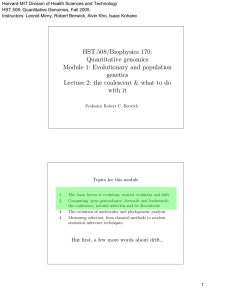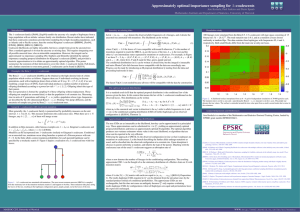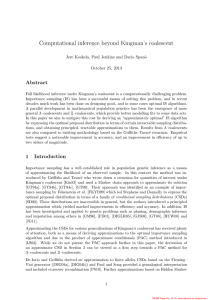Document 11743578
advertisement
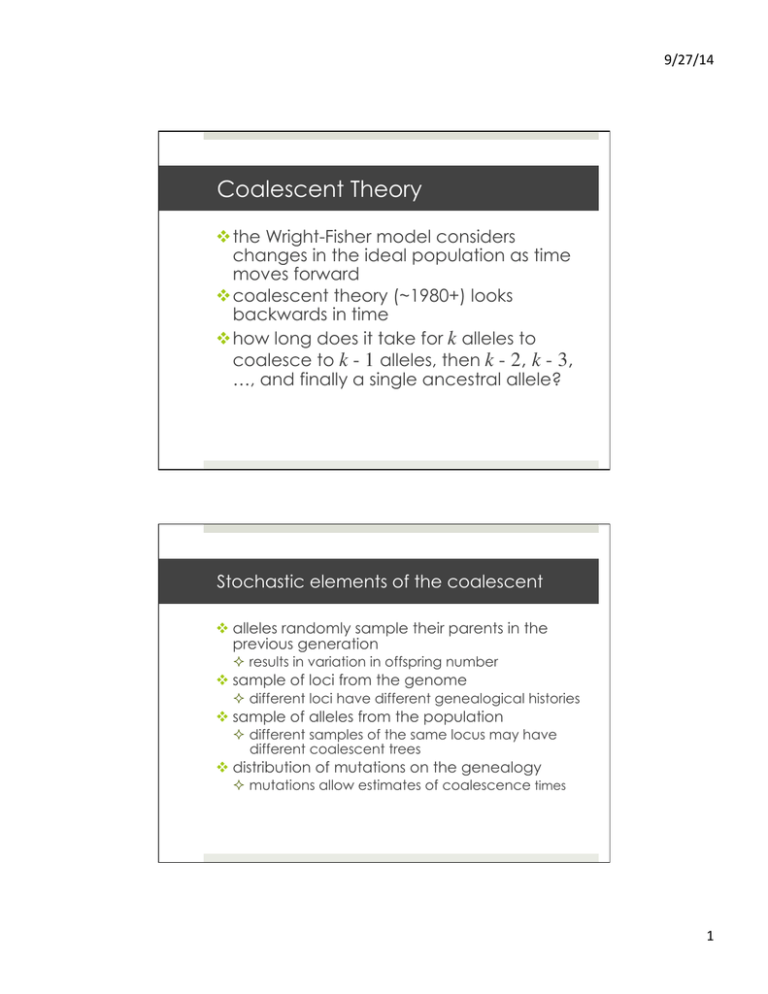
9/27/14 Coalescent Theory v the Wright-Fisher model considers changes in the ideal population as time moves forward v coalescent theory (~1980+) looks backwards in time v how long does it take for k alleles to coalesce to k - 1 alleles, then k - 2, k - 3, …, and finally a single ancestral allele? Stochastic elements of the coalescent v alleles randomly sample their parents in the previous generation ² results in variation in offspring number v sample of loci from the genome ² different loci have different genealogical histories v sample of alleles from the population ² different samples of the same locus may have different coalescent trees v distribution of mutations on the genealogy ² mutations allow estimates of coalescence times 1 9/27/14 Rosenberg & Nordborg 2002 Nat Rev Gen 2 9/27/14 Coalescent probabilities 1 v the present is time 0 (zero) v probability that two alleles had a common ancestor in generation 1 1 = 2N v probability that two alleles did not have a common ancestor in generation 1 " 1 % = $1− ' # 2N & Coalescent probabilities 2 v probability that two alleles have still not coalesced by generation t t ( " 1 %+ −t ( 2 N ) = *1− $ '- ≈ e ) # 2N &, 3 9/27/14 Coalescent probabilities 3 v probability that two alleles had a common ancestor in generation t+1 t 1 ) # 1 &, 1 −t ( 2N ) = 1− ≈ e % ( + . $ ' 2N * 2N - 2N € probability of coalescence in generation t + 1 probability of NO coalescence in generations 1 through t N = 20, k = 2 0.01 exact coal exp coal 0.0095 Probability of Coalescence 0.009 0.0085 0.008 0 5 10 15 20 Generation 4 9/27/14 Coalescent probabilities 4 v can we randomly choose a coalescence time from the exponential distribution? ² need to solve for t as a function of a random variable from 0 to 1 PNC ≈ e −t ( 2 N ) ln ( PNC ) ≈ −t ( 2N ) ln ( PNC ) × 2N ≈ −t t ≈ − ln ( PNC ) × 2N Coalescent probabilities 5 v what if we consider k alleles and not just 2? v what is the probability that k alleles had k distinct parental alleles the previous generation? k−1 " i % " ( 2k ) % Pr ( k ) = ∏ $1− ' ≈ $1− ' # & 2N 2N # & i=0 5 9/27/14 N = 20 to 10,000, k = 6 1 0.95 0.9 0.85 Probability of Non-coalescence 0.8 0.75 Exact Probability 0.7 Approximate 0.65 0.6 10 100 1000 10000 Population Size Coalescent probabilities 6 v probability that k alleles do not coalesce for t generations ) k , t ( ) t.. + 2 +− +* 2 N " ( 2k ) % PNC = $1− ' ≈e # 2N & .- 2N t ≈ − ln ( PNC ) × $ k ' = − ln ( PNC ) × && )) % 2 ( 4N k ( k −1) 6 9/27/14 Coalescent probabilities 7 v probability that k alleles do not coalesce for t generations, and then one pair coalesces to " k $ give k - 1 alleles at t + 1 generations ( )e = Pr ( k ) "#1− Pr ( k )$% ≈ t k 2 ( ) t(( ' 2 '− ' 2N # ( % 2N v distribution has mean and variance: Mean = € 4N 16N 2 2 generations Var = 2 generations k(k −1) [k (k -1)] € 7 9/27/14 expected coalescence times for k = 10 and N = 10,000 40000 time to k-1 alleles number of generations 35000 cumulative generations " 1% t = 4N $1− ' # k& 30000 25000 20000 15000 10000 5000 0 10 9 8 7 6 5 4 3 2 k remaining alleles 8

